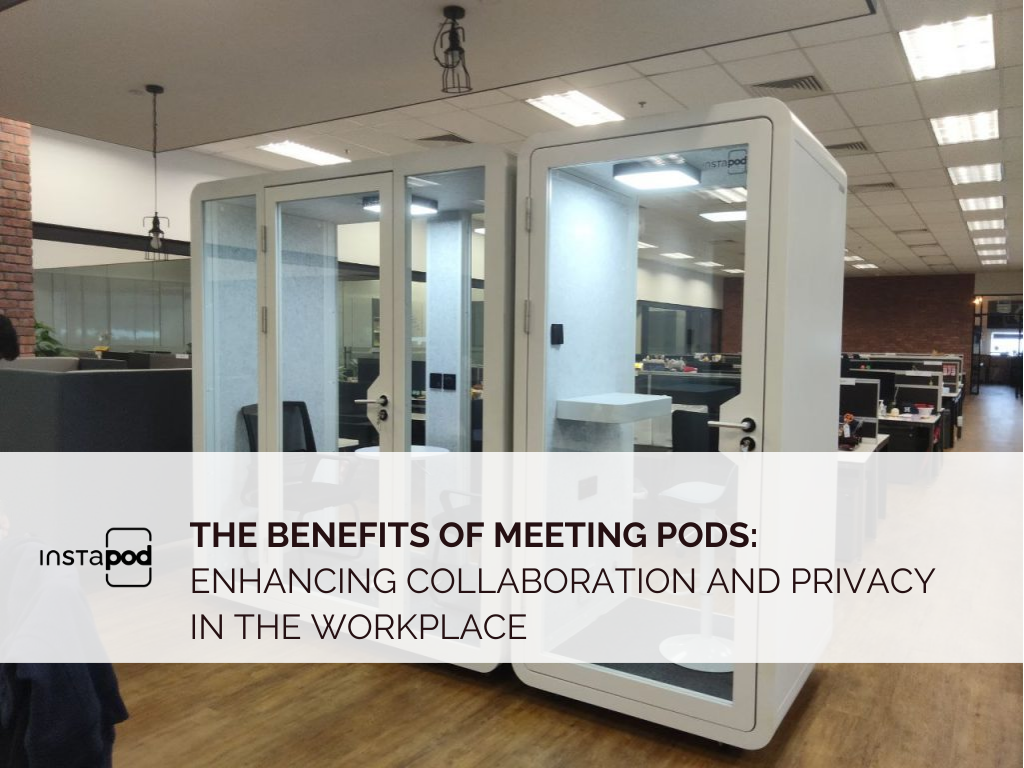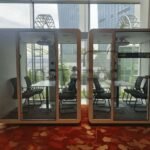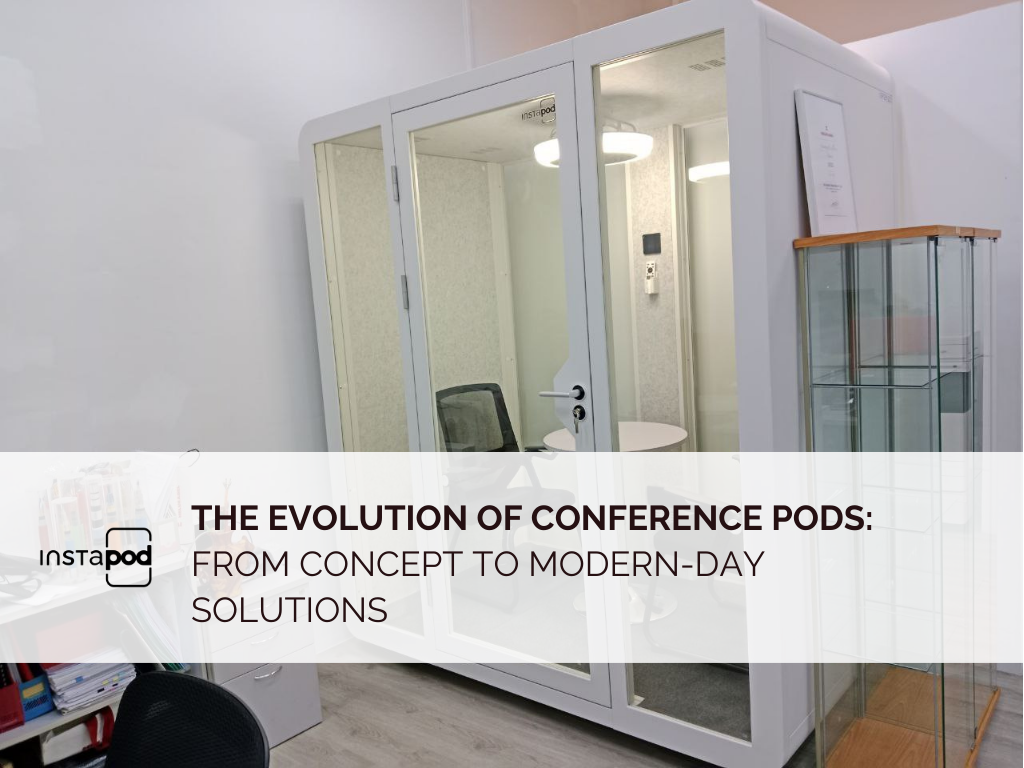No pods added to your quote request yet. Add some now for a free quote!
The Evolution of Conference Pods: From Concept to Modern-Day Solutions

In today’s dynamic and fast-paced business world, the traditional conference room is slowly becoming a thing of the past. With the rise of remote work, open office layouts, and the need for more flexible workspaces, the demand for innovative meeting spaces has skyrocketed. Enter the conference pod—a sleek, modern solution designed to meet the evolving needs of workplaces around the globe. But how did this concept evolve, and why has it become so popular today? This article traces the evolution of conference pods, from their initial concept to the cutting-edge solutions we see in modern offices.
The Traditional Conference Room: A Foundation for Change
The traditional conference room has long been a staple of corporate environments. These large, often formal spaces were designed to host meetings, presentations, and team collaborations. However, as businesses started to adopt more open-plan office layouts and remote working options, traditional conference rooms began to present challenges. They were often underutilized, took up too much space, and lacked the flexibility needed for smaller, impromptu meetings. Furthermore, as technology evolved, the need for spaces that could easily accommodate video conferencing and hybrid work models became apparent.
This shift in the nature of work and collaboration sparked a need for a more flexible, modern solution that could meet the demands of the new workplace—leading to the concept of the conference pod.
The Birth of Conference Pods: A Response to Open Office Challenges
Open offices gained popularity for their ability to promote collaboration, transparency, and communication among employees. However, they also came with a significant drawback: noise. The constant buzz of conversations, phone calls, and general office activity created an environment where focus and concentration were hard to achieve.
Enter the conference pod—a compact, soundproof space designed to provide privacy in open office environments. These pods were originally conceptualized as small, enclosed meeting rooms where teams could gather for private discussions without the distractions of the surrounding office. Early versions of conference pods were simple in design, often little more than isolated spaces with a table and a few chairs, but they laid the groundwork for future innovation.
The Rise of Modern-Day Conference Pods: A Technological Shift
As technology continued to advance, so did the design and functionality of conference pods. The modern-day conference pod has evolved into a highly functional space equipped with cutting-edge technology to facilitate collaboration, both in-person and remote.
Today’s conference pods come with integrated features like high-quality video conferencing systems, built-in monitors, and whiteboards to enhance productivity. Many pods now include soundproofing materials, LED lighting, and ventilation systems to ensure comfort and privacy. With the rise of hybrid work environments, these pods are designed to be easily connected to virtual meeting platforms, allowing teams to seamlessly collaborate with colleagues, clients, or partners located anywhere in the world.
Another significant innovation is the flexibility in the size and shape of modern conference pods. From small phone booths for one-on-one calls to larger pods that can accommodate entire teams, these structures are designed to fit the unique needs of different work environments. Some even offer modular designs, allowing businesses to reconfigure their office spaces as needed.
The Role of Sustainability in Conference Pod Design
In addition to being highly functional, modern conference pods have also embraced sustainability. Many manufacturers are now using eco-friendly materials, such as recycled metals and sustainable wood, to create pods that not only serve a practical purpose but also minimize their environmental impact. The rise of green office initiatives has further driven the demand for conference pods that align with companies’ sustainability goals.
Some pods also incorporate energy-efficient lighting, smart sensors, and low-energy ventilation systems to reduce power consumption. As companies increasingly prioritize sustainability, the eco-friendly design of conference pods has become a key selling point, appealing to organizations looking to create greener workspaces.
The Future of Conference Pods: What’s Next?
As businesses continue to adapt to the rapidly changing nature of work, conference pods will undoubtedly continue to evolve. With remote and hybrid work models here to stay, the demand for flexible, technologically advanced, and sustainable meeting spaces will only increase.
In the near future, we can expect to see further integration of smart technology into conference pods, such as voice-activated controls, AI-powered collaboration tools, and virtual reality (VR) meeting capabilities. These innovations will enable even more seamless communication and collaboration, whether employees are in the office or working remotely.
Moreover, as offices become more decentralized, with teams working from various locations, conference pods may also take on new forms, potentially becoming mobile units that can be easily transported and set up wherever they are needed. The future of conference pods is bright, with endless possibilities for further innovation.
Conclusion
The evolution of conference pods reflects the ongoing transformation of the workplace. From simple meeting spaces designed to combat the noise of open offices to cutting-edge, technology-driven solutions that facilitate seamless collaboration, conference pods have come a long way. As businesses continue to embrace flexible work models and sustainable office designs, conference pods will remain a key component of the modern workspace, offering employees the privacy, comfort, and technology they need to work efficiently and effectively.
With their ability to adapt to the ever-changing demands of the workplace, conference pods are no longer just a trend—they are the future of office collaboration.
Check these out too!
-
 Quiet Phone Booth in Singapore: Privacy Meets ProductivityNovember 14, 2025/0 Comments
Quiet Phone Booth in Singapore: Privacy Meets ProductivityNovember 14, 2025/0 Comments -

-
 How to Choose the Right Meeting Pods for Your Team in SingaporeNovember 14, 2025/
How to Choose the Right Meeting Pods for Your Team in SingaporeNovember 14, 2025/

